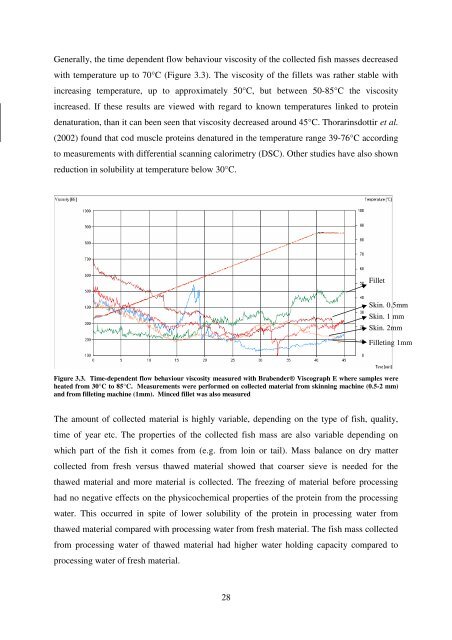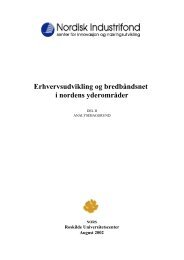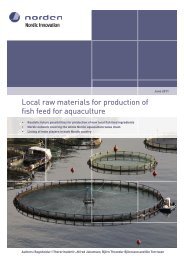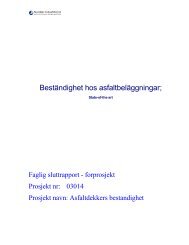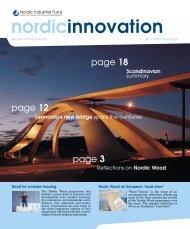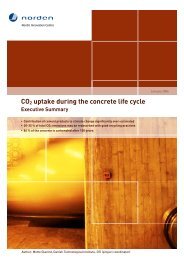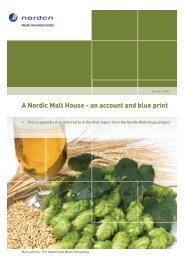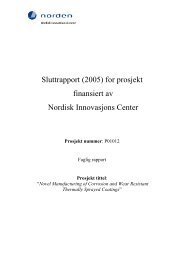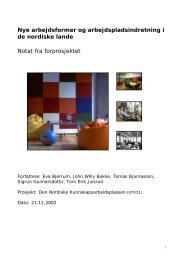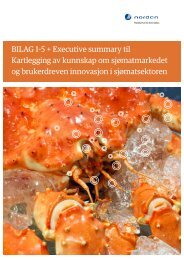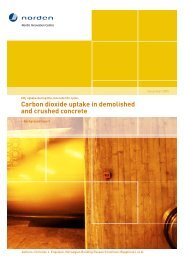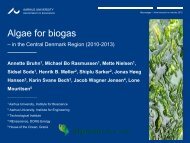Value added fish by-products - Nordic Innovation
Value added fish by-products - Nordic Innovation
Value added fish by-products - Nordic Innovation
You also want an ePaper? Increase the reach of your titles
YUMPU automatically turns print PDFs into web optimized ePapers that Google loves.
Generally, the time dependent flow behaviour viscosity of the collected <strong>fish</strong> masses decreased<br />
with temperature up to 70°C (Figure 3.3). The viscosity of the fillets was rather stable with<br />
increasing temperature, up to approximately 50°C, but between 50-85°C the viscosity<br />
increased. If these results are viewed with regard to known temperatures linked to protein<br />
denaturation, than it can been seen that viscosity decreased around 45°C. Thorarinsdottir et al.<br />
(2002) found that cod muscle proteins denatured in the temperature range 39-76°C according<br />
to measurements with differential scanning calorimetry (DSC). Other studies have also shown<br />
reduction in solubility at temperature below 30°C.<br />
Figure 3.3. Time-dependent flow behaviour viscosity measured with Brabender® Viscograph E where samples were<br />
heated from 30°C to 85°C. Measurements were performed on collected material from skinning machine (0.5-2 mm)<br />
and from filleting machine (1mm). Minced fillet was also measured<br />
The amount of collected material is highly variable, depending on the type of <strong>fish</strong>, quality,<br />
time of year etc. The properties of the collected <strong>fish</strong> mass are also variable depending on<br />
which part of the <strong>fish</strong> it comes from (e.g. from loin or tail). Mass balance on dry matter<br />
collected from fresh versus thawed material showed that coarser sieve is needed for the<br />
thawed material and more material is collected. The freezing of material before processing<br />
had no negative effects on the physicochemical properties of the protein from the processing<br />
water. This occurred in spite of lower solubility of the protein in processing water from<br />
thawed material compared with processing water from fresh material. The <strong>fish</strong> mass collected<br />
from processing water of thawed material had higher water holding capacity compared to<br />
processing water of fresh material.<br />
28<br />
Fillet<br />
Skin. 0.5mm<br />
Skin. 1 mm<br />
Skin. 2mm<br />
Filleting 1mm


